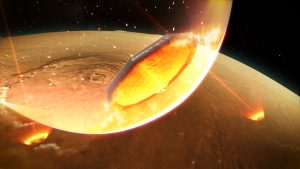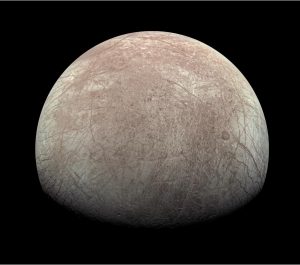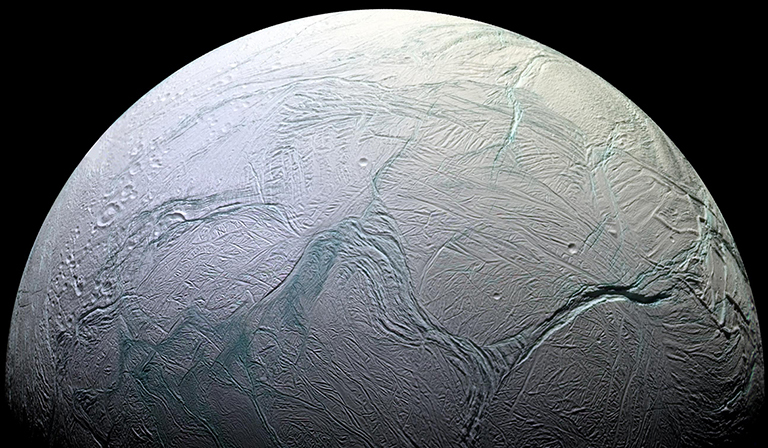
The search for life on other worlds: Suzuki Shino discusses the importance of microbiology in searching for habitable worlds
“Life cannot survive unless it can be born somewhere,” points out Associate Professor Suzuki Shino in the Department of Interdisciplinary Space Science at ISAS. “To discover extraterrestrial life, we must therefore understand the kinds of planetary environment that can produce life. So searching for the origin of life and extraterrestrial life are two sides of the same coin.”
Suzuki is a microbiologist who is interested in the network of chemical reactions that sparked life and allowed it to survive. This might initially seem a surprising fit with the research at JAXA’s Institute of Space and Astronautical Science. However, Suzuki feels the goals of space missions to seek out suitable environments for extraterrestrial life are intimately connected with the question of how life arose in the first place. Indeed, while the Earth is the only planet where we are certain that life began and flourished, Suzuki believes that studying the Earth alone will not provide all the answers.
“The Earth is already a world teeming with life,” explains Suzuki. “But life today was created through adapting to a dramatically changing global environment. So if you want to know the initial starting point of life, you need to go back to life before it advanced through evolution.”

This task is deceptively difficult. The early Earth where life began approximately four billion of years in the past was surrounded by an atmosphere devoid of oxygen, with a surface pounded by ultraviolet radiation and lit by a young sun weaker and cooler than today. The life around us is therefore the product of a multitude of adaptions to the changing conditions that would transform this early Earth into our current landscape.
By analysing and comparing the genetic data of different organisms, theories can be constructed for exactly what adaptions occurred. But without being able to meet examples of the life of the past, these theories cannot be proven. The impasse has meant that we still do not understand how an initially uninhibited planet environment can give rise to early life that can then evolve. What would help—Suzuki believes—is a few comparison points.
“The Earth and Mars are thought to have had similar early environments,” Suzuki says. “And there are also other celestial bodies with oceans, just like the Earth. If we can discover whether life has ever existed in these extraterrestrial environments, we can get a clearer picture of what conditions were necessary for the birth of life.”
To narrow down what types of life might be found on these worlds, Suzuki searches for sources of energy. Any organism will need a constant supply of energy to power biological processes. One energy source that particularly interests Suzuki originates from a reaction known as serpentinisation. Serpentinisation produces products that are used in both abiotic reactions and biological metabolisms, suggesting that life may have emerged by utilising a reaction that was already occurring on the planet.
Serpentinisation is a reaction between the mineral olivine and water. Evidence for both these ingredients has been found in many different locations in the Solar System, including Mars, Enceladus and the asteroid, Itokawa. When put together, olivine and water form hydrogen, which can then react with carbon dioxide to produce organic molecules, such as methane and acetate. This second reaction is known to be used by microorganisms on Earth, whose metabolism is powered by the energy released in the reaction between hydrogen and carbon dioxide.
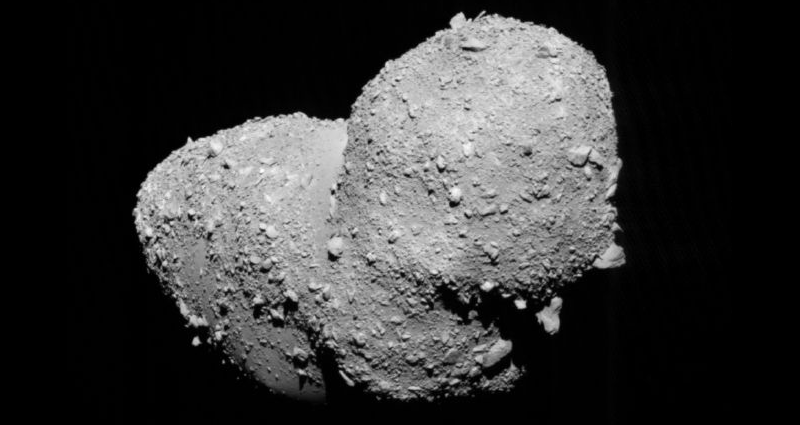
If the non-biological version of this reaction was a blue print used by early life, then the first life must have emerged where serpentinisation, and the resultant reaction with carbon dioxide, frequently occurred. Such an environment would likely be underground, and in strongly alkaline conditions inhospitable to most life that we know today. Suzuki has therefore been exploring what life could originate in such a location.
“We have been exploring what life could survive in such an extreme environment,” Suzuki explains. “And if life is possible, what kinds of life are possible? It has become clear that more diverse microorganisms than were suspected could survive, and if we can understand their constraints, we can identify environments where life might be found.”
Microorganisms on Earth can consist of just a single biological cell. Comparison between such single cell organisms and more complex life on Earth reveals strong similarities in genetic structure. This suggests that single cell organisms may have been the starting point for all life, making alien microorganisms the most likely form of life on other worlds. However, even such seemingly simple life may not be able to be maintained.

“Given it is well established that life exists on Earth, it must be possible for life to emerge on a planet. It therefore shouldn’t be surprising to find life existed on other celestial bodies too,” Suzuki points out. “But the more I learn about microorganisms, the more amazed I become at their elaborate mechanisms. It leads me to think that life cannot flourish easily.”
As an example, Suzuki points to the simple E. coli microorganism that encodes about 4,000 genes (the human genome consists of tens of thousands of genes). This genetic code produces enzymes (a type of protein that accelerates chemical reactions) that all work at similar temperature, acidity and other chemical conditions to allow about 4,000 different processes in the organism to operate at peak performance in the same environment. Without these enzymes, all the chemical reactions needed for the microorganism would function best in very different physical and chemical conditions. The efficiency of the majority of the reactions would therefore always be low and the microorganism would fail to thrive. The need for even a microorganism to evolve such an elaborate chemical system is what makes Suzuki believe that life has a tough journey in order to flourish.

Ultimately, there is only one way to discover if life could be common elsewhere in the Universe. We have to find evidence for either past or current life somewhere other than Earth. For this, Suzuki is keen to explore below the surface of Mars and the ocean moons of Jupiter and Saturn. In these locations, serpentinisation could provide a source of energy and the under-ground environment would protect against radiation unimpeded by the thin atmosphere on those worlds.
Of course, drilling on a distant planet to collect a subsurface sample is technologically challenging. Suzuki suggests that a first step would be to collect a sample from below the Moon’s surface, to both demonstrate the technology and confirm that significant differences between the surface and interior material are found to make the venture work while. For this, crewed lunar exploration such as the international “Artemis” program will be invaluable.
“I am hoping to find living life in the samples under the ice on Europa and Enceladus, and in the underground drilling samples on Mars,” Suzuki admits. “Personally, I would like to see a discovery of life similar to that on Earth, for example, life that uses nucleic acids for genetic in-formation. If the birth of Earth-like life is inevitable, I would be shaken to the core!”

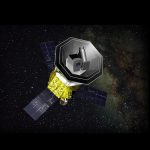 Previous Post
Previous Post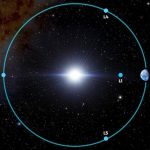 Next Post
Next Post